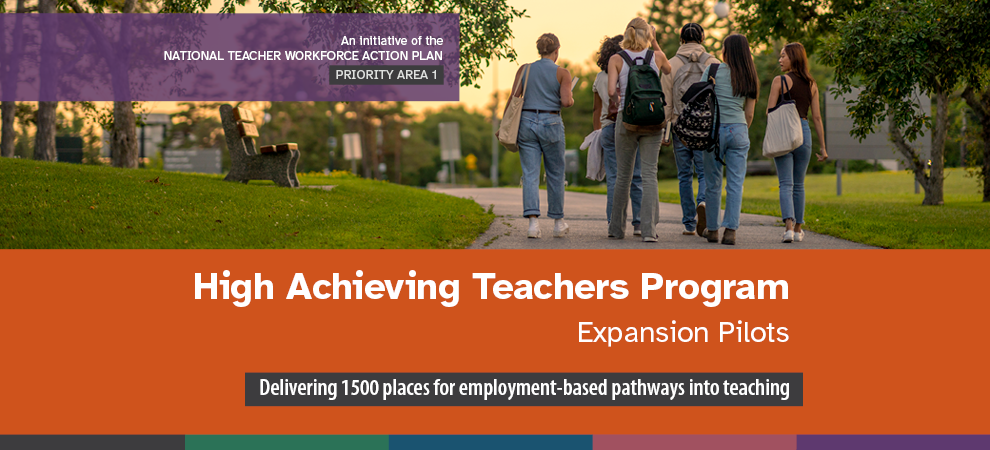As part of Phase 2 of the High Achieving Teachers (HAT) Program Expansion Pilots, ten providers will deliver almost 1500 places in new and innovative employment-based pathways into teaching across all states and territories.
Under the pilots, participants will be supported to complete their accredited teaching qualification while undertaking paid teaching experience. This will help participants make a successful transition into teaching and provide them with the skills they need for the classroom.
The pilots will focus on recruiting people from a diverse range of backgrounds, including STEM specialists, First Nations peoples, people with disability, teacher aides and people based in remote locations.
The HAT Program Phase 2 Expansion Pilots will assist employers of teachers by recruiting participants with the skills, experience, and personal characteristics that schools need.
A list of successful providers can be found below:
| Grantee | HAT Places |
|---|---|
| University of Canberra | 60 |
| Charles Sturt University | 100 |
| Teach for Australia | 475 |
| Western Sydney University | 100 |
| Australian Catholic University Limited | 285 |
| University of South Australia | 42 |
| University of Tasmania | 40 |
| Queensland University of Technology | 90 |
| Edith Cowan University | 74 |
| La Trobe University | 231 |
Minister for Education Jason Clare said:
“We don’t remember much about when we are little, but most of us remember our teachers’ names.
“That shows just how important our teachers are, and the impact they have on us. And we don’t have enough of them.
“This program targets recruiting and training more school teachers in schools that need them the most.”
The HAT Program Phase 2 Expansion Pilots delivers on Action 3 of the National Teacher Workforce Action Plan, with additional funding of close to $70.9 million committed by the Australian Government to expand employment-based pathways into teaching.
The outcome stems from the open-competitive grant opportunity which closed on 5 June 2024.
To find out more visit Alternative Pathways.

